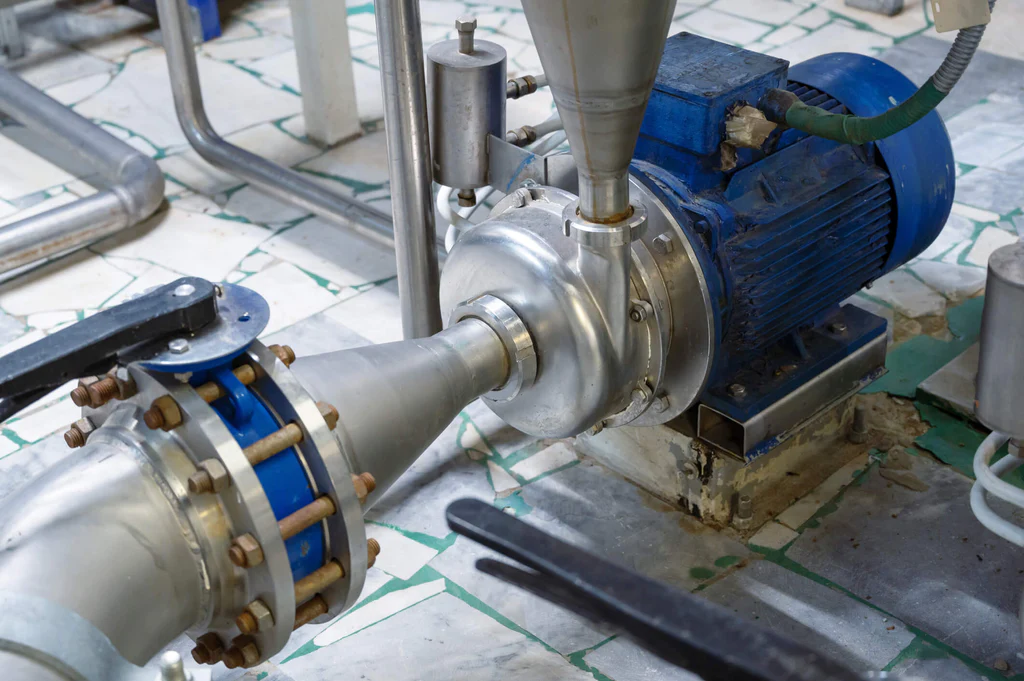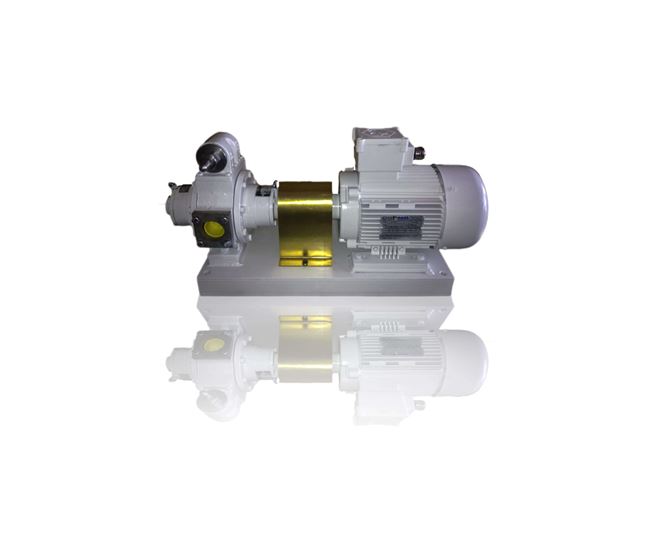Product Description
Product Description :
Brief Description of vacuum pump
2XZ-2 vacuum pump is a double stage high speed direct coupling structure rotary vane type vacuum pump, which is the basic equipment used to pump gas of the sealing container. Its air bleed speed is 2L/s(50Hz), 2.4L/s(60Hz); partial pressure≤6×10-2 Pa; motor power is 0.37kw; oil volume is 1L. Pump cavity is provided with a rotor, the rotor slot with rotary vane. The rotor drives the rotary vane rotation, the rotary vane close to the chamber wall and separated air inlet port from the discharge port, and the air inlet area of cavity volume is periodically enlarged and inhale, discharge chamber volume is periodically reduced and compressed gas, open the exhaust valve to exhaust gas and then to obtain vacuum. Its working performance is composed of 2 parts, the high level and low level. Its suction is connected with vacuum equipment, when in operation The gas in container will have a large number of suction and discharge, when the equipment got vacuum, high pressure grade exhaust valve is closed, high-pressure grade inlet gas will be transferred to the second level, and through the second stage suction and discharge vacuum equipment, it can obtain a certain vacuum. Pump connecting shaft with motor, high speed, small appearance, compact structure, convenient mobility work.
1. Pumping rate: 0.25~30L/s
2. Gas type: Clean dry air without any other mixture at ambient temperature.
3. Working requirements:
When the inlet pressure is greater than 6500Pa, continuous working hours must not be more than 3 minutes so that avoid fuel injection to damage pump.When the inlet pressure is less than 1330pa, it is allowed to work continuously for a long time.
4. Ambient temperature:5ºC-40ºC, the relative temperature is not higher than 90%.
Technical Parameter
| Model Parameter |
2XZ-0.25 | 2XZ-0.5 | 2XZ-1 | 2XZ-2 | 2XZ-4 | 2XZ-6 | 2XZ-8 | 2XZ-15 | 2XZ-25 | |
| Air bleed speed m³/h(L/s) | 50HZ | 0.9(0.25) | 1.8(0.5) | 3.6(1) | 7.2(2) | 14.4(4) | 21.6(6) | 28.8(8) | 54(15) | 90(25) |
| 60HZ | 1.1(0.3) | 2.1(0.6) | 4.3(1.2) | 8.6(2.4) | 17.2(4.8) | 26(7.2) | 34.5(9.6) | 64.8(18) | 108(30) | |
| Extreme pressure(Pa) | partial pressure | ≤6×10-1 | ≤6×10-2 | ≤6×10-2 | ≤6×10-2 | ≤6×10-2 | ≤4×10-2 | ≤4×10-2 | ≤4×10-2 | ≤4×10-2 |
| full pressure | ≤6.5 | ≤1.33 | ≤1.33 | ≤1.33 | ≤1.33 | ≤1 | ≤1 | ≤1 | ≤1 | |
| Rotating speed(r/min) | 50HZ | 1400 | 1400 | 1400 | 1400 | 1400 | 1400 | 1400 | 1400 | 1400 |
| 60HZ | 1720 | 1720 | 1720 | 1720 | 1720 | 1720 | 1720 | 1720 | 1720 | |
| Motor power(kw) | 0.12 | 0.18 | 0.25 | 0.37 | 0.55 | 0.75 | 1.1 | 1.5 | 2.2 | |
| Noise(dBA) | 63 | 65 | 65 | 68 | 68 | 68 | 70 | 70 | 72 | |
| Oil vilume (L) | 0.5 | 0.6 | 0.7 | 1 | 1.2 | 2 | 3 | 4 | 5 | |
| Size(mm) | 403*130*240 | 447*168*260 | 469*168*260 | 514*168*282 | 565*168*282 | 565*200*342 | 650*240*430 | 700*240*430 | 770*240*430 | |
| G.W./N.W.(Kg) | 16/15 | 17/16 | 18/17 | 22/20 | 24/22 | 50/40 | 70/60 | 86/75 | 98/85 | |
Corollary Equipment
1. 2XZ-2 Rotary Vane Vacuum Pump corollary use with freezer dryer to reach vacuum state, it’s an essential corollary equipment in medicine CHINAMFG drying, biology, food industry and agricultural products deep processing.
2. 2XZ-2 Rotary Vane Vacuum Pump corollary use with vacuum drying oven for maintaining vacuum state inside the oven, they mainly applies in powder drying and baking in vacuum condition.
3. 2XZ-2 Rotary Vane Vacuum Pump corollary use with vacuum crucible CHINAMFG to pump vacuum, they mainly used for the sintering, melting and analysis of metal, nonmetal and chemical compound.
Recommending Styles
Q: What kind of gas is not suitable for 2XZ-2 of rotary vane vacuum pump to pump out?
A: Corrosive to the metal, the chemical reaction to the pump oil, containing particles of dust, high oxygen content, explosive, and toxic gases.
Q: The working environment of 2XZ-2 refrigeration vacuum pump?
A: 5ºC-40ºC, the relative temperature is not higher than 90%. When the inlet pressure is less than 1333pa, it is allowed to work continuously for a long time.
Q: What is the payment terms?
T/T, Paypal, Western Union, Ali credit insurance, L/C etc
/* January 22, 2571 19:08:37 */!function(){function s(e,r){var a,o={};try{e&&e.split(“,”).forEach(function(e,t){e&&(a=e.match(/(.*?):(.*)$/))&&1
| Oil or Not: | Oil |
|---|---|
| Structure: | Rotary Vacuum Pump |
| Exhauster Method: | Kinetic Vacuum Pump |
| Vacuum Degree: | Vacuum |
| Work Function: | Maintain the Pump |
| Rotating Speed(R/Min): | 1400 |
| Samples: |
US$ 250/Piece
1 Piece(Min.Order) | |
|---|

Can Rotary Vane Pumps Handle Corrosive Gases or Vapors?
Rotary vane pumps are generally not suitable for handling corrosive gases or vapors due to their construction and materials. Here’s a detailed explanation:
– Construction: Rotary vane pumps consist of a rotor with vanes that slide in and out of slots within the rotor. The pumping chamber is sealed by these vanes, creating the necessary vacuum or pressure. The internal components of rotary vane pumps are typically made of materials such as cast iron, steel, or aluminum. While these materials are suitable for many applications, they may not withstand the corrosive effects of certain gases or vapors.
– Corrosion Concerns: Corrosive gases or vapors can react with the internal components of the pump, leading to material degradation, erosion, or chemical reactions. This can result in the formation of deposits, pitting, or damage to the pump’s surfaces. Corrosion can compromise the pump’s performance, efficiency, and longevity. In some cases, it can also introduce contaminants into the pumped medium, affecting the quality of the process or downstream equipment.
– Material Compatibility: The compatibility of the pump’s internal materials with the corrosive gases or vapors is a critical consideration. Many corrosive gases or vapors require specialized materials such as stainless steel, Hastelloy, or other corrosion-resistant alloys to withstand their effects. Rotary vane pumps typically do not have internal components made from these materials, making them unsuitable for handling corrosive substances.
– Alternative Solutions: If corrosive gases or vapors need to be handled, alternative pump technologies specifically designed for such applications may be more appropriate. For example, chemical-resistant pumps made from materials compatible with the corrosive substances, such as diaphragm pumps, magnetic drive pumps, or certain types of centrifugal pumps, are commonly used. These pumps incorporate corrosion-resistant materials and specialized sealing mechanisms to ensure safe and reliable operation.
– Protective Measures: In some cases, it may be possible to use rotary vane pumps for applications involving mildly corrosive gases or vapors by implementing protective measures. This can include installing chemical traps or filters in the pump system to remove or neutralize corrosive substances before they reach the pump. However, the effectiveness and feasibility of such measures depend on the specific application and the level of corrosion resistance required.
It’s important to consult with pump manufacturers or industry experts to determine the most suitable pump technology for handling corrosive gases or vapors. They can provide guidance on selecting the appropriate pump materials and design to ensure safe and efficient operation in corrosive environments.
Overall, while rotary vane pumps offer many advantages in various applications, they are generally not recommended for handling corrosive gases or vapors due to the potential for material damage and performance degradation. Using pumps specifically designed for corrosive applications is crucial to maintain operational integrity and prevent costly failures.

Can Rotary Vane Pumps Create a Deep Vacuum?
Rotary vane pumps are capable of creating a vacuum, but the depth of the vacuum they can achieve is limited compared to other types of vacuum pumps. Here’s a detailed explanation:
Rotary vane pumps utilize a positive displacement mechanism to create a vacuum. As the rotor rotates, the vanes slide in and out of the rotor slots, creating expanding and contracting chambers. This action allows the pump to draw in gas or fluid from the inlet port and then expel it through the outlet port.
While rotary vane pumps can achieve relatively high vacuum levels, they are not typically designed to create extremely deep vacuums. The ultimate vacuum level that a rotary vane pump can achieve depends on several factors, including the specific pump design, the quality of the sealing surfaces, the lubrication system, and the operating conditions.
In general, rotary vane pumps can achieve vacuum levels in the range of a few millibars (thousandths of atmospheric pressure) or slightly lower. However, they may struggle to reach the ultra-high vacuum levels required in certain applications, such as semiconductor manufacturing or scientific research.
For applications that demand deeper vacuums, other types of pumps, such as turbomolecular pumps or cryogenic pumps, are typically employed. These pumps are specifically designed to operate in the high-vacuum or ultra-high-vacuum range and can achieve significantly lower pressures than rotary vane pumps.
It’s important to consider the specific requirements of your application when selecting a vacuum pump. If you need to create a deep vacuum, you may need to explore alternative pump technologies that are better suited to achieve the desired vacuum level.
In summary, while rotary vane pumps can create a vacuum, their capability to achieve deep vacuums is limited compared to specialized high-vacuum pumps. The ultimate vacuum level achievable with a rotary vane pump depends on various factors, and if ultra-high vacuum levels are required, alternative pump technologies should be considered.


editor by Dream 2024-04-17
by
Leave a Reply